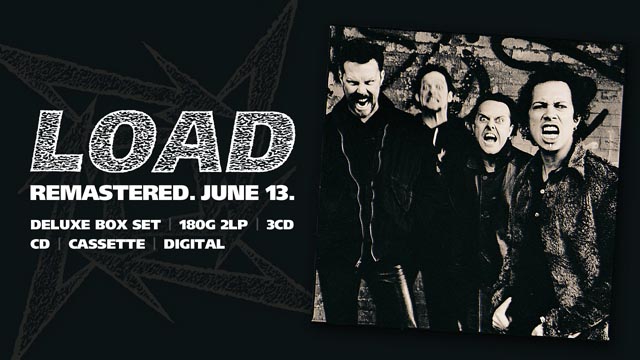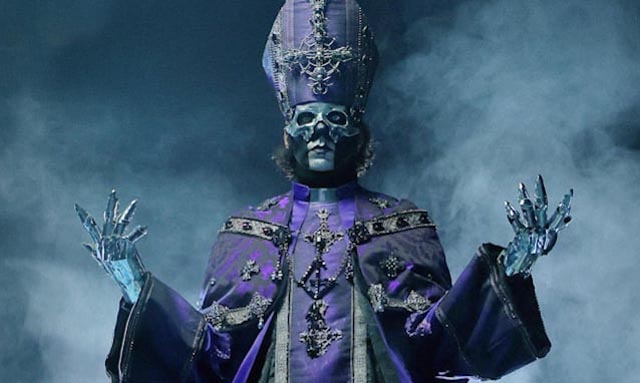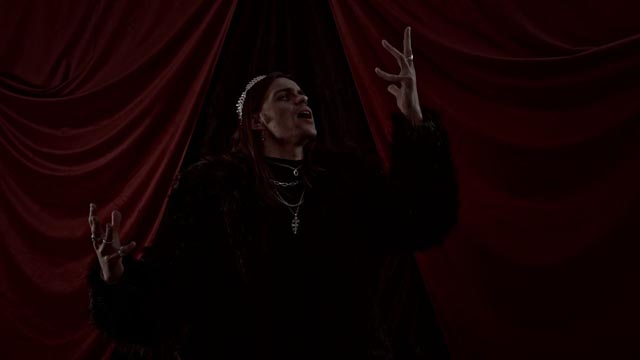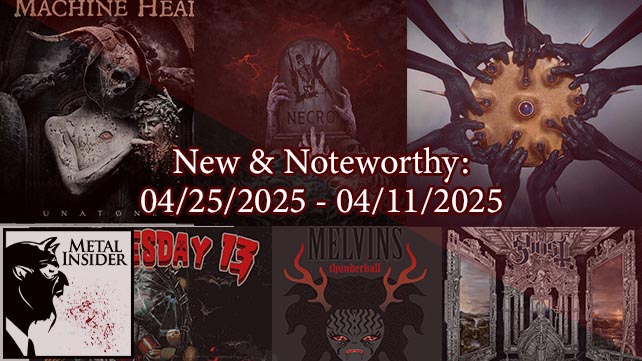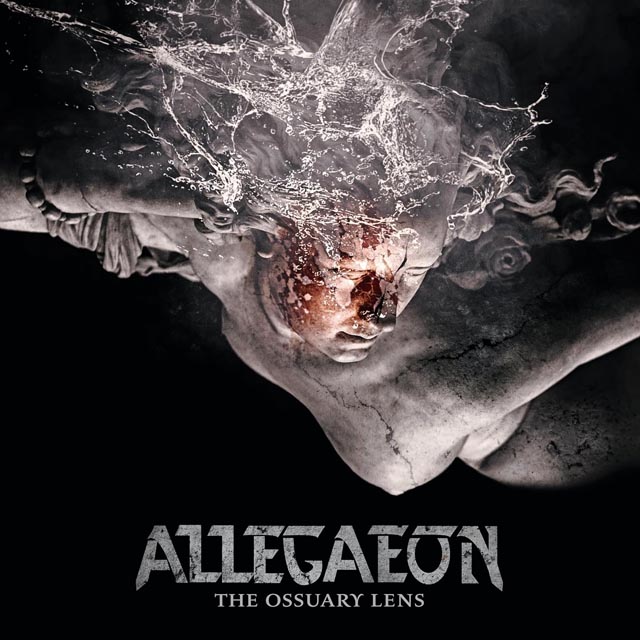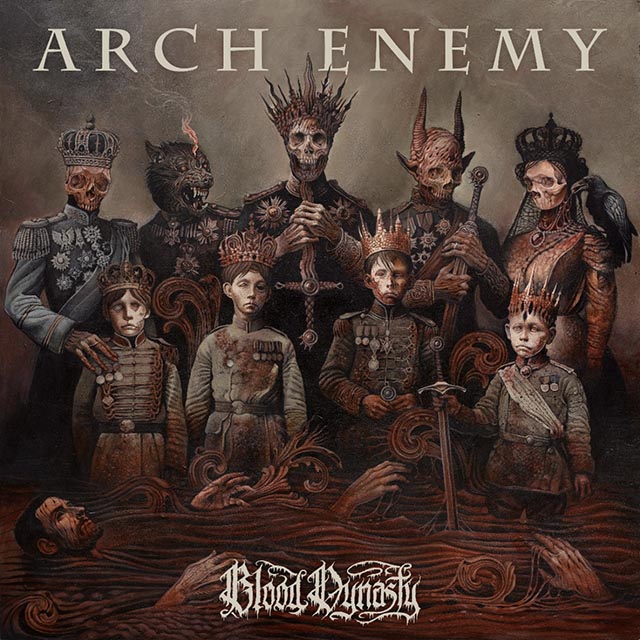
Matt Heafy is easily one of the most driven, focused, and wildly talented musicians to ever spread his serpentine seed upon the metal domain. Not only does the guy have chops, he’s an incredible songwriter as well – inflicting insane amounts of melody into his technically intricate, musician-humbling creations, underscoring a new breed of what those of us into labeling call metalcore. Since 1999, Heafy has led his band, Trivium, to become a sort of “great white hope” for modern metal, combining elements of thrash, death, and even hints of black metal into one of the most sonically pleasing styles in contemporary heavy.
Heafy also loves his fans – a fact that bubbles over with the latest Trivium offering, Ember To Inferno: Ab Initio. The latest addition to the Trivium discography isn’t exactly a new entry, but rather a re-awakening, if you will, of the band’s 2003 Ember to Inferno debut, with a twist that die-hards will devour. In addition to the full, original, Ember to Inferno album, Ab Initio contains bonus cuts galore, mainly in the form of tracks culled from Trivium’s “blue,” “red,” and “yellow” demos, which were never officially released. The packaging is divine – complete with new Trivium logo designed by Christophe Szpajdel of Emperor logo fame, as well as the music being made available on standard CD or gorgeous, colored vinyl. Heafy had been promising for a few years that the band’s largely overlooked debut would return, and he’s delivered in a big way.
Metal Insider had the chance to talk to Matt Heafy recently, as Trivium was preparing for a European tour to start in early February – the band’s final live jaunt in support of their 2015 offering, Silence in the Snow. Heafy clued us in to the how and why behind the Ab Initio package, as well as some thoughts on the band’s history, his outlook on touring, including the mutual admiration between Trivium and Sabaton, and even some brutally honest talk about the seemingly revolving door that has been Trivium’s drummer position. Leave no doubt Heafy is the guy at the helm of this ship, and he knows exactly where it needs to go.
Seeing you this past Fall with Sabaton here in the U.S., I’m struck by what seemed like an odd pairing on paper, really turned out to be an incredible package. The bands really complimented each other. What were your thoughts on this most recent U.S. run?
It was amazing, and it was just like a story I was telling from stage each day. As soon as “Silence in the Snow,” the song, was released, we started seeing Sabaton shirts in our crowd everywhere. We were already aware of that band and we were fans of that band. Having toured the European festivals a lot, we’d become fans of the band though that. We started seeing that maybe Sabaton fans get Trivium now, through “Silence in the Snow” having more of a direct connection with Sabaton fans, or bands like Maiden, Dio, Priest, and Sabbath. Once we saw that interest in the fans, it was as easy as our management contacting their management – the band also expressed interest. We were able to meet each other at a festival and talk about the idea. The band loved the idea of touring with us, and we loved the idea of touring with them.
I think when we first announced it, people were a little surprised. I don’t think we’re that different. What’s cool about a band like Trivium, is that we can go out and tour with a band like Sabaton, and when we did the In Waves cycle, we toured with Dream Theater, Asking Alexandria, Five Finger Death Punch, and In Flames – all in that same record cycle. It all worked. I don’t know what it is about our band that makes us able to jump between sub-genres and tour with different bands, and all different types of festivals, but it all seems to work.
Have you seen more acceptance between different types of heavy music fans as your career has progressed?
We do push acceptance, to check out different genres of bands, and I’m able to come from both sides of this. When I was like 15-16 years old, that’s when I was at my most “elite” metal stage. I really just listened to black metal, and I didn’t listen to bands that were popular. Basically, I was the kind of kid that wouldn’t like Trivium. I have also seen the other side of it, where we’ll play festivals like Wacken or Bloodstock, these more traditional metal festivals, and that’s where things begin to cross over. You’ll have a black metal band playing onstage, you’ll have a hardcore band playing another stage, and the fans are able to cross-pollinate and see different bands, and realize that they’re all essentially the same thing.
I think it’s important to know what you like and you don’t like, but it’s equally important to check everything out first-hand, and potentially see what you like about it. Nowadays, I’m completely open-minded, and I’ll absolutely check everything out – if it’s not for me, then it’s not for me. If it’s of the metal world, I think it’s definitely the band’s responsibility to help things out. I think that the bigger metal bands in the world, it is their responsibility to help their genre out by bringing out those other bands. You’ll see some heavier band get a little bigger, and they’ll bring out the same generic touring rock bands that everyone else brings out. We knew Sabaton had a big, dedicated fan base, but we also knew that a lot of our newer Trivium fans wouldn’t know who they are. It’s like how “Until the World Grows Cold” got more traditional rock fans into Trivium, while “Silence in the Snow” brought more traditional metal fans to the band. It’s cool to be able to do that. It can’t always be planned, but it’s nice to see when there’s that inter-mingling of styles.
Moving on to the new Ember to Inferno: Ab Initio release, this is really a goldmine for the die-hard fan. It’s really a great representation of where Trivium came from, as far as the evolution of the band. The packaging is great as well – the vinyl is beautiful. Why was now the right time to put this out?
Well, going back a couple of years now, I always said that Ember would be coming back. When it first came out, I felt like it was cursed. The distribution was such that on the release date, I couldn’t find the release in my home state. That was pretty depressing – realizing you were signed and couldn’t find your record anywhere. When they fixed the distribution a year later, that was when Ascendency came out and Ascendency really eclipsed Ember to Inferno, so Ember never really got its fair release. When I got the record back, I said I wanted to re-release this and figure out the right platform. There were ideas in my head, like potentially another label, and then my management company proposed to me that, it may take time, but I should act as the label for Ember, and have a distribution deal with a company. It took two years, but I was able to release the record through a company called Cooking Vinyl, and it was nice to be the label, myself. Cooking Vinyl did all the hard work, as far as putting promo together and printing everything, and getting distribution on streaming formats.
I knew I wanted to do the album in two ways. One way was to release Ember exactly as it was – original artwork, original everything, completely unchanged. I also wanted to package up the best of the best of it – from the very beginning of Trivium, right up until the moments people were familiar with us on Ascendency. That’s what Ab Initio means – Ab Initio in Latin is “from the beginning.”
I mentioned this collection of music being out on vinyl – how do you feel about the whole “vinyl comeback?”
I think it’s great that vinyl is coming back. What’s really cool about the way music is now; I just watched a documentary on how the mediums on which we listen to music have evolved. It’s gone from a very primal form of vinyl, which I believe was like four and a half minutes on each side, and it keeps going up. It went to vinyl, then it went to a more convenient yet less quality sound with tape. Nowadays, where it’s basically vinyl or streaming – I think that’s the best of both worlds. With streaming, it’s the most convenient, most travel-friendly medium – it’d be impossible to travel without it. Things like Spotify and vinyl – those are the two main sources of how I listen to music. The best audio quality is on vinyl, and streaming, is as good as CD or even perhaps vinyl, with the right system. So, it’s nice to have that duality of classic and contemporary.
You mentioned the packaging – that’s a big thing with me. I feel that with Trivium, we were always into making sure the visuals were great. Even Ember to Inferno, I thought the art was good; Ascendency was great. There were things we figured out over the years, like In Waves is where we figured out our photo style, our music video style, our stage style, the rest of the stuff we hadn’t quite figured out yet. With Ab Initio, I knew it had to be great, it was what I’d want to see as a fan and what could be different. Unfortunately, the only person that doesn’t get credit on this record, is the person who put the whole package together – that’s my wife, Ashley, who’s a graphic designer. What we did is get a new Trivium logo – the one from Christophe Szpajdel, who did the Emperor logo and a lot of other black metal bands. We had him do a Trivium logo. The photography in the background is by Jon Paul Douglass – he did all the In Waves packaging and Silence in the Snow packaging. It’s a re-vamp to what Ember to Inferno was. When Ashley showed me the black metal logo with kind of rainbow color with white behind it, I said, “I’ve never seen a black metal logo like that.” So, it followed that whole theme of juxtaposition – Trivium has always done things that were unexpected, and felt that was the embodiment of that with the logo and packaging.
With the jump to Roadrunner for Ascendency, and a much bigger audience, what was your headspace like around that time? Were you beginning to see the band and the music in a different way, or were you zoned in on the core of what you wanted Trivium to be, musically?
We had the same goals since we were 12 – to be the kind of metal band that could play to countless people around the world, everywhere. With both Ember and Ascendency, we didn’t have fans yet. We just made the kind of music we wanted to hear. I don’t know if we were making the kind of music we thought was missing, but we were just trying to create something we hadn’t heard before that we would like, as fans of metal and fans of music. I feel like all the rough times, when we went in and made something great – we went in with that attitude. What’s really great for me, being able to listen to everything for Ab Initio, and having to trace back to these early records, I can see that we’ve only grown and evolved in the band that we are. Like, the red, yellow, blue albums, we don’t sound like a completely different band. Yes, red does sound like more of a thrash band, but it has elements you could expect later on from Trivium – the blueprint has always been there.
We were never like a ska band first, or something. We were always a metal band first, that liked to try different things. The influences on the red record were like Metallica, Pantera, Testament, Slayer. The blue record we were heavily into death metal, and a little metalcore. Ember was like Heaven Shall Burn, Converge, more metalcore bands being added into that influence with death metal and traditional metal. Ascendency is where even more influences were able to be brought in. Looking back on Ember, I used to think it was just Ascendency Jr., but it’s really not. It’s a very different album, and now we have seven records that are pretty different from each other, which is a cool fete.
I’ve known about your serious black metal influences for a while, so I was wondering if there was ever a conscious desire to lean more in that direction with Trivium, in lieu of the more accessible sound that the band has had over the years.
We’ve toyed with it, and that’s why with every record, they’ve been so different than the previous ones; we’ve tried to do different things. That’s probably the one, audio-wise, the least prominent in our music. It’s there – it’s peppered throughout very, very subtly, like on “To Burn The Eye,” there is the black metal minor chord style right before the breakdown, which is something…you’d never really hear black metal chords like that. It’s cool to mix that style into it. It goes back to your question about diversity as far as metal bands go. “A Skyline’s Severance” was written with black metal chords in mind, and there’s a second of it on “Entrance to the Conflagration,” but it’s been very minimal. I think the way black metal has been influential to me is more Ihsahn and Emperor, how every record was very different from the previous. IX Equilibrium was very different from Anthems to the Welken at Dusk. They’re both different from Prometheus, and Nightside as well – within black metal.
Being the guitar nut I am, I love watching you and Corey (Beaulieu, lead guitarist) trade off of each other live. Did you two ever consciously sit down and delegate how each guy would handle what, stylistically?
Originally, when he first joined, just before Ember. It was something where it just melded. We didn’t have a set plan for it, we just played and things were as they were. As the years went on, and we saw what the natural tendencies were, which were me doing the more melodic stuff and Corey the more shreddy stuff. I think it was around Shogun, or maybe In Waves – although on Shogun I still did more of the shreddy stuff, and I still jump in once and a while and Corey will trade off melodic stuff too, but we realize what our natural strengths are, and we play to those now. I think it was In Waves where I said to Corey that I’m going to go for this more melodic style, and I always joke about the “dad” soloing style – that blues/rock, 60’s/70’s-style pentatonic playing (laughs). Corey goes more to that super-shredding territory, but we both like to do what we both like to do – that’s what it’s been more about.
I have to ask you about the brand new Trivium drummer in Alex Bent. I loved what he did on the last Battlecross record. You guys are no strangers to changes when it comes to drummers, so what do you think Alex will offer to the band’s sound?
What I feel we need to clarify, is that the last three drummers, everyone has been a session drummer within our band. The band has been Corey, Paolo (Gregoletto, bassist), and myself since the beginning. As far as the rumors go with who plays with us now, I really like to push with people, is that the last time we had an official band member that was a drummer, was Travis (Smith). While we absolutely wish him well, he’s not with us anymore – and that’s because of the four of us. The chemistry between the four of us…we weren’t able to make something great between the four of us anymore, so we decided among all four of us that we need to separate. Since then, most currently having Paul (Wandtke) play with us, the future will always be in the hands of the person on the drum throne. It’s very difficult for anybody to fill the shoes of a legacy and a time. Only time will tell, and we’ve always been up for what the fourth player brings to the table.
It’s refreshing to hear that honesty, instead of you guys just putting out a press release and backing away from it.
And, I think that’s really something people don’t know – that the last three guys were session players. Maybe that’s the fault of Corey, Paolo, and myself for not saying it more often, but that’s just how it was. We wish nothing but the best for anyone that’s ever played with us, but sometimes a session musician is the same idea as the band’s sound guy – you’re working for the same common goal with them, but those aren’t the people in the band.
Is it too early to look ahead to the rest of 2017 for the band? I know you’re heading to Europe to wrap up the tour cycle for Silence in the Snow.
Nothing really new on our radar at this time, it’s just a matter of self-practicing. We just finished up band rehearsals a little while ago, keeping everything nice and tight, and now it’s just daily individual practicing all our parts. My regiment when we’re off, is Monday through Friday, I log at least 2-3 hours a day singing, and 30 minutes of, not even guitar playing, it’s treating the instrument like an athlete would. Every morning from 9:30-10:30am I do my vocal warmups – with the second half hour I’m stretching while doing the vocal warmups. Then, it’s off to weights or yoga, and jiu-jitsu. When I’m done with all of that, it’s full singing. Once we’re done with the interview, I’ll go back to full singing for 1-2 hours, going over random songs in our set. I really keep a regiment, so that when I come back with the band, it’s really solid and air-tight, which is what everyone else does, too. I don’t think they live by the clock like I do, but we’re always jamming and practicing to make sure everything’s great.

